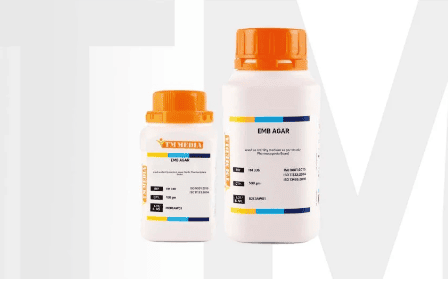Here's a more detailed explanation:
Purpose:
Selective:
EMB agar inhibits the growth of Gram-positive bacteria, making it selective for Gram-negative bacteria.
Differential:
The dyes (Eosin Y and methylene blue) in the medium react differently depending on whether bacteria ferment lactose, leading to distinct colony appearances.
Key Components and Their Roles:
Peptone: Provides nutrients for bacterial growth.
Lactose: A fermentable sugar that allows for differentiation between lactose fermenters and non-fermenters.
Sucrose: Another fermentable sugar, providing an alternative carbon source.
Eosin Y and Methylene Blue: These dyes inhibit Gram-positive bacteria and act as indicators for lactose fermentation.
Phosphate buffer: Helps maintain a stable pH for the medium.
How it Works:
Lactose Fermenters:
Bacteria that ferment lactose produce acids, causing the pH of the medium to drop. This causes the eosin and methylene blue dyes to be absorbed into the colonies, resulting in dark (often green metallic sheen for E. coli) or mucoid, pink-brown colonies.
Non-Lactose Fermenters:
Bacteria that do not ferment lactose do not produce acid, and the dyes remain soluble. This results in colorless or transparent colonies.
In Summary:
EMB agar is a valuable tool for identifying and differentiating Gram-negative bacteria, particularly coliforms, based on their ability to ferment lactose. The characteristic colony appearances on EMB agar help microbiologists distinguish between different types of bacteria and can be used as a preliminary step in identifying specific bacterial species.





